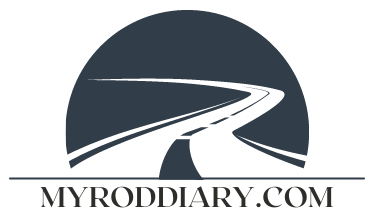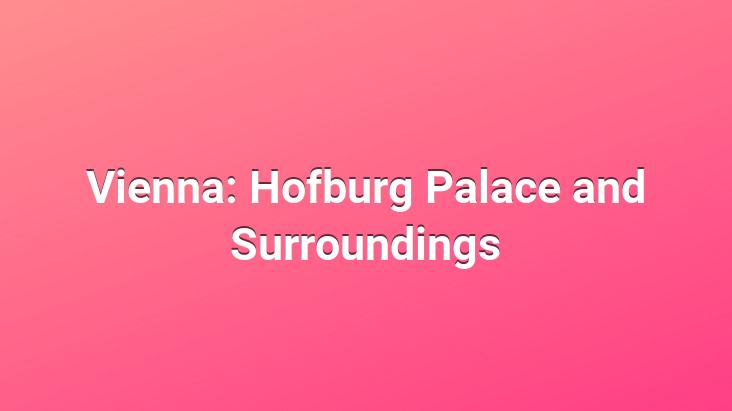Transportation in Vienna is very convenient and easy. Buses, metro, tram, train,… You can easily obtain a map showing the transportation network from tourist offices or hotels.. However, you can also choose to walk, as all touristic places in Vienna are close to each other.. Because all the streets carry you to different dates.. It is a different pleasure to close your eyes and think about the historical state of these streets, and to imagine that dukes, baronesses, barons and horse-drawn carriages are passing by.
A few hotel suggestions can be given for accommodation in Vienna.. Since it is possible to reach almost everywhere by metro, it is useful to look for hotels close to metro stations.. Just a 5-minute walk from the Messe Wien Exhibition Center and the Praterstern Train and Underground Station, the Best Western Plus hotel is well located for visiting the city’s amenities and attractions. Another alternative recommendation to this hotel is Leonardo Hotel Vienna, which is 100 meters from Mariahilfer Strasse shopping street, 400 meters from Westbahnhof, and in about 5 minutes by metro to Vienna city centre. you can consider. Both hotels are very convenient, economical and high quality in terms of the facilities they offer.. Fleming’s Deluxe Hotel Wien-City, located in a very convenient location just behind the City Hall of the city in Vienna and a 5-minute walk from the Ringstrabe Boulevard, is another suitable hotel that you can put on your list of choices.. Apart from these recommended hotels, you can check out other hotels by going to booking.com from here.
The Ottomans besieged Vienna twice in history. The first of these sieges was made by Suleiman the Magnificent in 1529, and the second by Kara Mustafa Pasha from Merzifon in 1683.. Vienna, which currently has a population of 1.8 million, was the capital of the 50 million Habsburg Dynasty.. Vienna was thought of as the gateway to the West for the Ottomans. However, it was not possible to enter through this door.. Since Vienna could not be overthrown even when the Ottoman Empire was at its strongest, Habsburg Dynasty wrote the Latin initials of the phrase “The Sovereignty of the Whole World belongs to Austria” on their coat of arms.
Vienna’s The center passes through the roads called the Ring and consists of 23 regions.. The ring actually represents the city walls surrounding the city.. Next to the name of each region, its number is written.. The city grew in rings, expanded. Namely; “Innere Stadt“, the oldest settlement, is called the first district. Until 1850, this was the old city center.. Emperor Franz Joseph made the first major city expansion after 1850, including the settlements around the city, and today’s 9. stretched to the area. In 1850, they demolished the walls because they thought that the Turkish army would not come anymore.. In 1892, the city was expanded for the second time and expanded to 19 districts.. Continuing in this way, they rose up to 23 regions.. This structure is somewhat reminiscent of Paris.. At present, wealthy people live in the first district of the city.. From the 3rd region, foreigners live. (Hungarians, Serbs, Slovaks, Turks, etc…) In 1940, after they were convinced that the Turks would not come any more, they closed the watchtower in St. Stefan’s church and the towers in the suburbs in 1952.
The inside of Vienna. The most important palace is the Hofburg Palace ie Royal Palace of Vienna. An enormous palace where Franz Josef and Queen Elizabeth (aka Sisi) lived and where all the items they used from that period are exhibited, preserved in accordance with their original form.. It may take 1 full day to walk around, but if time is limited, you can visit this place in 1 hour.
There is the Spanische Reitschule (Spanish riding school) that must be visited within walking distance of the Hofburg Palace.. vienna horses in white color. There is a show with horses here on Sundays.. However, both the prices are very expensive and the show takes a very short time.. For this reason, you can try to watch for the days when the horses train on weekdays.
Just beyond this is Joseph Square. in the middle 2. There is a statue of Joseph on a horse. (1795 – 1807). Right behind it is the National Library, which houses more than 2 million manuscripts.. This baroque-style building was previously used for marriage ceremonies.. In fact, Joseph and Queen Elizabeth got married here.
10 km south of Vienna is the Schönnbrunn palace, which was used as a summer palace in history.. Schönbrunn means beautiful spring, beautiful spring. Made in 1683. During the Ottoman attacks, some of them were destroyed but repaired.. Known as the “Versailles of Vienna“, this palace has 1,400 rooms. Each room has its own decoration and decoration.. It is on the list of UNESCO World Heritage Sites. Since the sun’s rays damage the furniture inside, the UNESCO delegation decided to close the windows of the rooms.. The palace also has a legendary garden.. You can lie on the grass among the colorful flowers and sunbathe. At Christmas time, they set up a market called Christkindlmarkt in the garden of the palace.. It is possible to buy various souvenirs, try mulled wine and local delicacies in this market.
You can take a break at Schwarzenberg Café to take a breather in the palace.. You can try the famous Austrian coffee. They are quite confident in their coffee culture. There is even a cafe museum.. However, it was the Ottomans who were instrumental in introducing Austria to coffee.. If the Ottomans had not left their coffee sacks here, perhaps Austria would not have known about coffee.
If you walk through the park next to the palace, you arrive at the Zoo.
Art galleries are also of great importance in Vienna.. But the most impressive one is Belvedere Palace. This palace was the summer palace of the general at that time.. This is 3. located in the area. The paintings here outweigh the beauty of the garden at the entrance of the palace and the architecture of the palace. The most important exhibition inside is that of Gustav Klimt. In addition, world-famous Austrian painters (such as Kokoshka, Egon Schiele) have long-term exhibitions here.. If you are interested in art, do not skip it.
Vienna is a fancy, flamboyant and expensive city.. The young people are generally helpful, they explain to you in detail what you are asking. Middle-aged people prefer German and generally give clear and short answers.. When they learn that you are already Turkish, their view of you changes.. Of course, it would not be wrong to say that the fact that we besieged the city twice had an effect on this.

